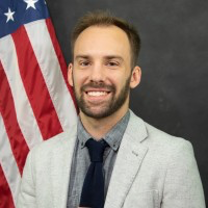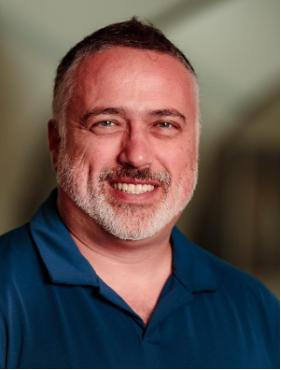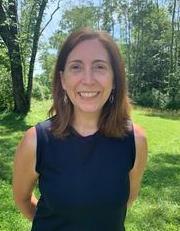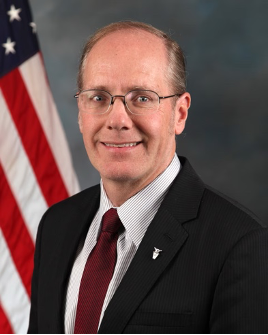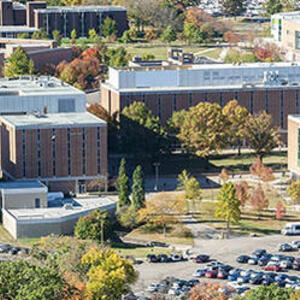
April 11-12, 2025
Wright State University Dayton Campus
On this page:
- Event Overview
- Conference Schedule
- Keynote Speakers
- Keynote Presentations
- SPS (Student Physics Society)
- Committee Members
- Location and Travel Information
- Contact Information
- Off Campus Things To Do
Event Overview
The Spring Meeting of the Eastern Great Lakes Section (EGLS) of APS will be held on Friday, April 11 – Saturday, April 12, 2025, at Wright State University in Dayton, Ohio. The theme of this conference is Multiscale Innovations in Applied and Fundamental Physics: Elevating Flight and Beyond. Contributed talks and posters from any area of physics are welcome. Submissions from students are especially welcome. Student registration is free.
Conference Schedule
| Time | Session | Location |
|---|---|---|
|
Noon |
Registration Table Opens Check-in and Registration Begins |
Front Entrance, Student Union |
| 1–1:30 p.m. | Welcome Remarks | Apollo Room |
|
1:35–2:35 p.m. |
1st Plenary talk Kathy Koenig, Ph.D. Professor of Physics, University of Cincinnati Enhancing Student Learning and Sense of Belonging through Interactive Web-Based Tutorials |
Apollo Room |
|
2:45–3 p.m. |
Poster setup |
Apollo Room and Endeavour Room |
|
3–5 p.m. |
Poster Session and light refreshments |
Apollo Room and Endeavour Room |
|
5:05–6:05 p.m. |
2nd Plenary talk Nicholas J. Morley, Ph.D. Senior Scientist, High Power Photonics Air Force Research Lab High Energy Laser Beam Control – Aero-Optics and Opto-Mechanics at its Best |
Apollo Room |
| 6:10–7:10 p.m. |
SPS kickoff meeting (Atlantis Room) Tour of Clean Room facility Break |
|
|
7:15 |
Banquet Remarks by Spoogmay Khan representing APS and the Student Ambassadors program. Jazz performance by Wright State students “Downbeat Jazz” group. |
Apollo Room |
|
9:15–10:30 p.m. |
SPS game night |
Student union Atrium |
| Time | Session | Location |
|---|---|---|
|
8 a.m. |
Coffee and refreshments |
Room 109, Oelman Hall |
|
8:30–9:30 a.m. |
Welcome and 3rd Plenary talk Ezekiel Johnston-Halperin, Ph.D. Professor of Physics, The Ohio State University Molecular Materials for Quantum Information Science and Engineering |
Room 109, Oelman Hall |
|
9:40–11:05 a.m. |
Oelman Hall; please see schedule for room information |
|
|
11:15 a.m.–12:15 p.m. |
4th Plenary talk Matthew Grasinger, Ph.D. Research Engineer at Air Force Research Laboratory Careers and research at the intersection of statistical physics and aerospace composites |
Room 109, Oelman Hall |
|
12:15–12:45 p.m. |
Closing remarks, Oral presentation and Poster awards |
Room 109, Oelman Hall |
|
1–3 p.m. |
SPS pizza lunch (free for students and SPS advisors) |
|
|
3 p.m. |
End of SPS meeting |
Keynote Speakers
Keynote Presentations
Enhancing Student Learning and Sense of Belonging through Interactive Web-Based Tutorials
Presented by: Kathy Koenig, Ph.D.
Abstract:
Meeting the diverse learning and psychological needs of students poses significant challenges, particularly in large enrollment courses or those with a wide range of student abilities. To address this, we developed over 30 web-based interactive video-enhanced tutorials (IVETs) that provide personalized instruction to promote expert-like problem-solving approaches. IVETs incorporate multimedia learning principles, featuring live-instructor video narration, branching multiple-choice questions, and adaptive feedback that simulates office-hour support. Expanding on this platform, we recently created interactive online interventions (IOIs) to foster belonging, a critical factor in STEM success. This presentation will highlight research findings on the effectiveness of the IVETs and IOIs, along with best practices for developing and implementing online learning tools. IVETs and the software for creating custom interactive video tutorials are freely available at compadre.org/IVET, while IOIs are available upon request. Both can be embedded into Learning Management Systems (LMS) via SCORM packages for automatic grading, requiring minimal instructor effort while supporting student learning across remote, hybrid, and face-to-face course formats. This work is supported by NSF DUE-1821396 and DUE-2416548.
High Energy Laser Beam Control – Aero-Optics and Opto-Mechanics at its Best
Presented by: Nicholas J. Morley, Ph.D.
Abstract:
To negate targets with directed energy, generating a multi-kilowatt high energy laser beam is only the first half of the story. To efficiently engage targets, a system needs a robust mechanism for projecting the laser beam from an aircraft and compensating for deleterious effects caused by the surrounding atmosphere. The need for this compensation generates several unique challenges that span multiple physics and engineering disciplines, which include optics, fluid dynamics, mechanical engineering, and both open- and closed-loop controls. Some of the most interesting problems happen at the intersections of these fields, where an understanding of cross-discipline interactions is needed to ensure a successful solution. Research into laser beam control is enabling construction of systems that address environmental conditions such as high vibration, constrained volumes, high-speed dynamic aero-optical distortions, and deep turbulence. During this talk I will discuss research and identify challenges surrounding the mitigation of aero-optical/aero-mechanical effects for lasers systems used in airborne application.
Molecular Materials for Quantum Information Science and Engineering
Presented by: Ezekiel Johnston-Halperin, Ph.D.
Abstract:
The rise of quantum information as a topic of combined fundamental and technological interest presents new challenges to the development of the electronic and photonic materials from which qubits are assembled. In addition to traditional challenges for these materials (defects, crystallinity, compatibility) they exhibit additional sensitivity to the quantum phase and coherence of the targeted degrees of freedom. In this context molecular materials are particularly appealing as they allow for atomic-scale manipulation of electronic, nuclear, and structural degrees of freedom that leverages decades (centuries?) of work in chemical synthesis. While this potential may seem academic given the apparent barriers to integrating molecular systems into the solid-state device architectures that dominate the quantum application space, I will discuss our recent demonstrations of the ability to utilize molecular materials for multiple applications that have traditionally been dominated by solid-state materials. For example, as a proof of concept we have developed the ability to deposit and pattern molecule-based thin films of the ferrimagnet vanadium tetracyanoethylene (V[TCNE]2) that exhibit ultra-low damping under magnetic resonance ( ~ 4 x 10-5) and have been successfully integrated into high quality factor (high-Q) superconducting resonators, demonstrating strong microwave-magnon coupling [1]. Further, we have recently demonstrated a technique that allows for the encapsulation of molecular monolayers of the spin qubit vanadyl phthalocyanine (VOPc) within a solid-state tunnel junction constructed using exfoliation and stacking of the 2D materials graphene and hexagonal boronitride (hBN) [2]. These structures are sensitive to the electronic states of the VOPc, and the mechanical nature of the device assembly provides a platform that is general and modular – capable of measuring a wide variety of molecules as well as electrically active defects in 2D materials. Taken together, these advances point to a bright future for the development of novel quantum systems based on molecular materials that are directly competitive with their solid-state counterparts, with potential applications across the full spectrum of quantum information technologies, including sensing, communication, and computing.
[1] Qin Xu, et al., Strong Photon-Magnon Coupling Using a Lithographically Defined Organic Ferrimagnet, Advanced Science, 2310032 (2024); https://doi.org/10.1002/advs.202310032
[2] Marzieh Kavand, et al. “A general and modular approach to solid-state integration and readout of zero-dimensional quantum systems,” arXiv:2407.11189
Careers and research at the intersection of statistical physics and aerospace composites
Presented by: Matthew Grasinger, Ph.D.
Abstract:
Conventional manufacturing of aerospace composites using autoclaves produces high quality parts but at a high cost, both in terms of time and energy. So-called agile manufacturing processes, such as additive manufacturing and liquid composite molding, are a class of promising techniques for increasing throughput, rapid prototyping, and achieving parts with intricate geometries and/or graded material properties. Designing these processes, however, is nontrivial as the underlying physics can include complexities such as multiphase and non-Newtonian fluid dynamics, heat transfer, and changes in material morphology due to the curing or crystallization of polymers (i.e. nonequilibrium thermodynamics). In this talk, we explore the modeling of these processes through the lenses of polymer and statistical physics. We aim to understand the interplay of processing parameters and phenomena such as wetting, polymer crystallization, electrorheological effects, etc., on aerospace part quality. By elucidating fundamental mechanisms that control processing-morphology-property relationships, we hope to inform the development and design of future agile manufacturing processes. In addition to fundamental research, this talk will give a perspective on careers in physics with alternatives to academia.
SPS (Student Physics Society)
The Spring 2024 SPS Zone 7 Meeting will be held on April 11-12, 2025, on the campus of Wright State University in conjunction with the Eastern Great Lakes Section of the American Physical Society. The overall theme of the meeting is "Multiscale Innovations in Applied and Fundamental Physics: Elevating Flight and Beyond" but contributions will be accepted on any topic related to physics or astronomy. Students who wish to present a talk or poster should submit their abstract using the Abstract Submission form.
This event will be an opportunity for students to introduce themselves, meet fellow students from across the zone, and find out more about the Society of Physics Students. The event will be hosted by Associate Zone Councilor Jacob Callebs and Zone Councilor Ron Kumon.
Please refer to conference schedule for SPS activities planned for Friday and Saturday.
Committee Members
View the list of committee members.
Location & Travel Information
The Spring 2025 APS meeting will be held on the Dayton campus of Wright State University, in both our Student Union and Oelman Hall buildings. Learn more about our campus, the Dayton region, and places to eat while on campus. You can also explore our underground tunnel system that connects 21 of 22 buildings in the academic section of campus.
Accommodations
There are no officially designated hotels for our conference.
Two hotels, Wingate by Wyndham and Tru by Hilton are within walking distance from the campus.
View the full list of Nearby Accommodations.
Travel and Parking
Wright State University is located at:
3640 Colonel Glenn Hwy.
Dayton, OH 45435
937-775-1000
On Friday, April 11, 2025, visitors are encouraged to park in Lot 1, Lot 1A, Lot 2 or Lot 4 (overflow). On Saturday, April 12, you can park in Lot 11 (closest to Oelman Hall). Visitors do not need a parking pass or permit for these two days.
Maps
Contact Information
Wright State University Physics Department
Amit Sharma, Ph.D., Associate Professor of Physics
Phone: 937-775-2760
Email: amit.sharma@wright.edu
Off Campus Things To Do
Family-Friendly Stops
Take the Next Step
Finding the right college means finding the right fit. See all that the College of Science and Math has to offer by visiting campus.

